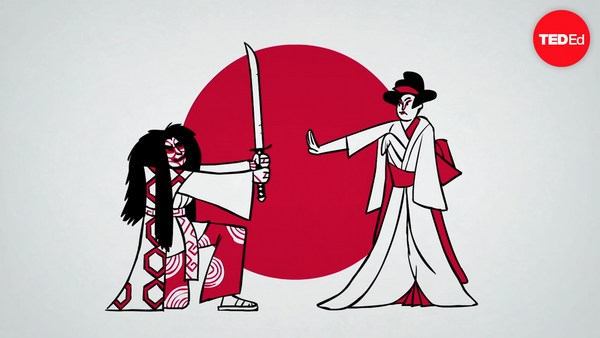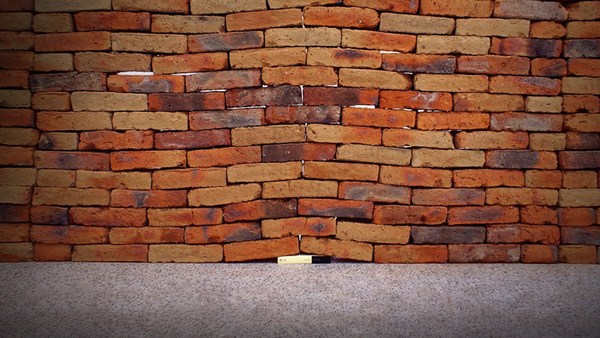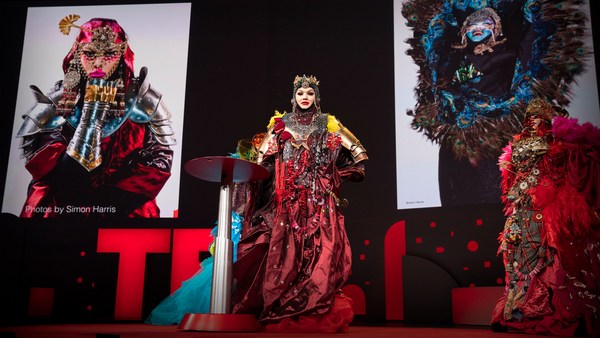A sky blue canvas ripped open by an enormous skull. Teeth bared through visceral slashes of oil and spray-paint. In 2017, this untitled artwork was auctioned off for over 110 million dollars. But it’s not the work of some old master. These strokes of genius belong to 21 year old black Brooklynite Jean-Michel Basquiat – one of America’s most charismatic painters, and currently, its highest sold.
Born in 1960 to a Haitian father and a Puerto Rican mother, Basquiat spent his childhood making art and mischief in Boerum Hill. While he never attended art school, he learned by wandering through New York galleries, and listening to the music his father played at home.
He drew inspiration from unexpected places, scribbling his own versions of cartoons, comic books and biblical scenes on scrap paper from his father’s office. But it was a medical encyclopedia that arguably exerted the most powerful influence on Basquiat. When young Jean-Michael was hit by a car, his mother brought a copy of "Grey’s Anatomy" to his hospital bed. It ignited a lifelong fascination with anatomy that manifested in the skulls, sinew and guts of his later work – which frequently explores both the power and vulnerability of marginalized bodies.
By 17, he launched his first foray into the art world with his friend Al Diaz. They spray painted cryptic statements and symbols all over Lower Manhattan, signed with the mysterious moniker SAMO. These humorous, profound, and rebellious declarations were strategically scattered throughout Soho’s art scene. And after revealing himself as the artist, Basquiat leveraged SAMO’s success to enter the scene himself; selling postcards, playing clubs with his avant-garde band, and boldly seeking out his heroes. By 21, he’d turned to painting full time.
His process was a sort of calculated improvisation. Like Beat writers who composed their work by shredding and reassembling scraps of writing, Basquiat used similar cut-up techniques to remix his materials. When he couldn't afford canvases, he fashioned them out of discarded wood he found on the street. He used oil stick, crayons, spray paint and pencil and pulled quotes from the menus, comic books and textbooks he kept open on the studio floor.
He kept these sources open on his studio floor, often working on multiple projects at once. Pulling in splintered anatomy, reimagined historical scenes, and skulls transplanted from classical still-lives, Basquiat repurposed both present day experiences and art history into an inventive visual language. He worked as if inserting himself into the legacy of artists he borrowed from, producing collages that were just as much in conversation with art history as they were with each other. For instance, "Toussaint L’Overture versus Savonarola" and "Undiscovered Genius of the Mississippi Delta" offer two distinct visions of Basquiat’s historical and contemporary concerns. But they echo each other in the details, such as the reappearing head that also resurfaces in "PPCD." All these pieces form a network that offers physical evidence of Basquiat’s restless and prolific mind.
These chaotic canvases won rapid acclaim and attention. But despite his increasingly mainstream audience, Basquiat insisted on depicting challenging themes of identity and oppression. Marginalized figures take center stage, such as prisoners, cooks and janitors. His obsession with bodies, history, and representation can be found in works evoking the Atlantic slave trade and African history, as well as pieces focusing on contemporary race relations.
In less than a decade, Basquiat made thousands of paintings and drawings- along with sculpture, fragments of poetry and music. His output accelerated alongside his meteoric rise to fame, but his life and work were cut tragically short when he died from a drug overdose at the age of 27. After his death, Basquiat’s work only increased in value- but the energy and flair of his pieces have impacted much more than their financial worth. Today, his influence swirls around us in music, poetry, fashion and film- and his art retains the power to shock, inspire, and get under our skin.





